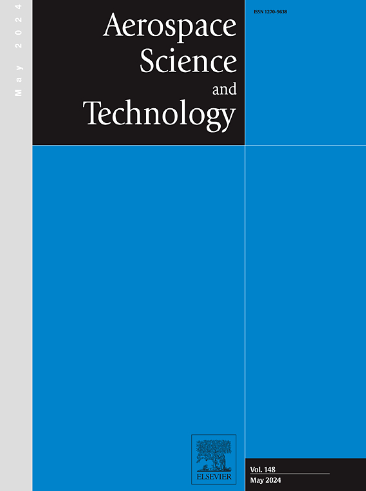An improved body force model to simulate engine/airframe integration with boundary layer ingesting inflow distortion
IF 5.8
1区 工程技术
Q1 ENGINEERING, AEROSPACE
引用次数: 0
Abstract
Boundary layer ingestion (BLI) propulsion systems have attracted lots of attention because of its significant potential to increase the propulsive efficiency in the future commercial aircraft field. Due to the strong component coupling effect in the intake/compressor system, integrated studies through full-annulus, unsteady simulations are required, but the time cost is unacceptable. To reduce the computational time, this study explores two new correlation parameters for thick boundary layers and swirl inflow in the BLI configuration, based on the body force model developed by Chima. For a transonic fan, the improved body force model is validated against the Computational Fluid Dynamics (CFD) results for both clean inflow and the S-duct/fan system with BLI. The relative errors in fan overall performance are below 2 % for clean inflow and 2.65 % for the BLI case, with a 2700-fold increase in computational speed for the latter. Meanwhile, the distribution trends of flow parameters are consistent with the unsteady CFD results, including total pressure, total temperature, and axial velocity. Finally, the body force model is applied to an embedded-fan/airframe configuration. Simulation results show that the new conceptual layout does not improve the lift or lift-to-drag ratio at small angles of attack at cruise, despite the increased lift where BLI occurs. Furthermore, flow separations originating from the intake inlet are observed at high angles of attack due to the stronger streamline deflection and an adverse pressure gradient within the intake.
一种改进的体力模型来模拟边界层摄取流入畸变的发动机/机身一体化
边界层吸入推进系统由于在未来商用飞机领域具有提高推进效率的巨大潜力而备受关注。由于进气/压气机系统中存在较强的部件耦合效应,需要通过全环空、非定常模拟进行综合研究,但这样做的时间成本是不可接受的。为了减少计算时间,本研究在中国开发的体力模型的基础上,探索了BLI配置中厚边界层与旋流流入的两个新的相关参数。对于跨声速风扇,将改进的机体力模型与清洁进气道和带BLI的s -导管/风扇系统的计算流体动力学(CFD)结果进行了对比验证。风机整体性能的相对误差在清洁流入时低于2%,在BLI情况下低于2.65%,后者的计算速度提高了2700倍。同时,总压、总温度、轴向速度等流动参数的分布趋势与非定常CFD计算结果一致。最后,将体力模型应用于嵌入式风扇/机身结构。仿真结果表明,在巡航小迎角情况下,新概念布局并没有提高升力或升阻比,尽管在发生BLI时升力有所提高。此外,由于更强的流线偏转和进气道内的不利压力梯度,在大攻角下可以观察到来自进气道的流动分离。
本文章由计算机程序翻译,如有差异,请以英文原文为准。
求助全文
约1分钟内获得全文
求助全文
来源期刊

Aerospace Science and Technology
工程技术-工程:宇航
CiteScore
10.30
自引率
28.60%
发文量
654
审稿时长
54 days
期刊介绍:
Aerospace Science and Technology publishes articles of outstanding scientific quality. Each article is reviewed by two referees. The journal welcomes papers from a wide range of countries. This journal publishes original papers, review articles and short communications related to all fields of aerospace research, fundamental and applied, potential applications of which are clearly related to:
• The design and the manufacture of aircraft, helicopters, missiles, launchers and satellites
• The control of their environment
• The study of various systems they are involved in, as supports or as targets.
Authors are invited to submit papers on new advances in the following topics to aerospace applications:
• Fluid dynamics
• Energetics and propulsion
• Materials and structures
• Flight mechanics
• Navigation, guidance and control
• Acoustics
• Optics
• Electromagnetism and radar
• Signal and image processing
• Information processing
• Data fusion
• Decision aid
• Human behaviour
• Robotics and intelligent systems
• Complex system engineering.
Etc.
 求助内容:
求助内容: 应助结果提醒方式:
应助结果提醒方式:


